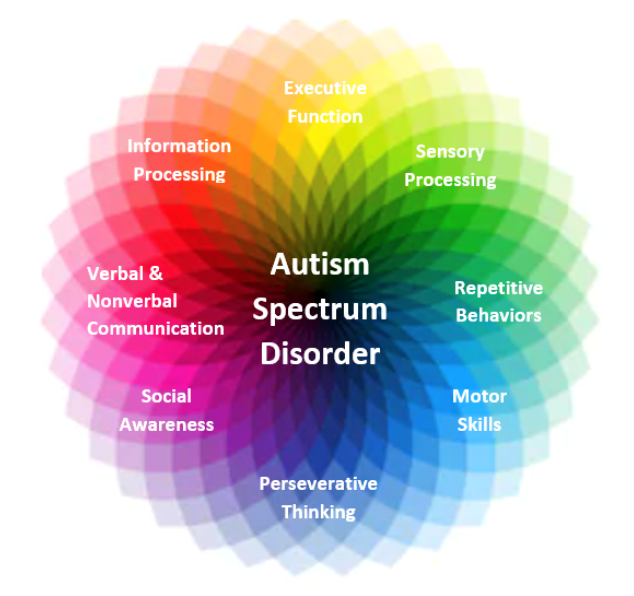10 Tips for an Autism Friendly Classroom

Autism is prevalent in our mainstream as well as special schools. If you need advice for supporting those on the spectrum while at school then look no further – our top ten tips will get you well on your way.
Children with autism have difficulties in three areas; social communication, social interaction and social imagination (for example during imaginative play). Some children with ASD also have problems processing sensory input. This can affect any of their senses, to any degree. For example the volume of noise or the brightness of light could be very difficult for some children with autism to cope with. So how can you, as a teacher ensure that your classroom practice is well set up to support students on the spectrum? Here are 10 tips you might find useful for creating an autism friendly classroom.
1- Create Routine
Children with autism can struggle to follow verbal instructions, so creating a routine can help to ensure they understand what is happening at any one time. For example, if lessons always begins with lining up outside, hanging your coat on a peg then moving quietly to your desk to sit down, this will help to reduce anxiety and allow any students with autism to start each lesson in the least stressful way possible, and in line with what the rest of the group are doing and what the teacher needs. Seeing other students following the same routine also helps to give a visual clue/context of what they should be doing and gives students with autism reassurance that they are doing “the right thing”.
2 – Transition from one activity to another gently
Most children with an ASD also have difficulty in shifting their attention from one activity to another. They need time to process the given instruction. Repeating the instruction may not help such a student. This just adds more information that needs to be processed. This in turn may cause more frustration for the child. A visual timetable can help in these cases. For example, if the next activity is snack time, having a picture which represents this on a timetable which the student can regularly refer to will give the child chance to anticipate what is coming next and process the transition before it takes place. A good rule of thumb is also to count to 10 (silently) after giving an instruction to give a child with autism time to process it.
3 – Keep instructions concise
Many children with an autism spectrum disorder may have difficulty following instructions in class. Changing the phrasing of a question or instruction can be confusing and may lead to a lack of response. Such situations can leave teachers feeling frustrated and under the impression that they are being ignored or the child is being naughty. A useful tip is to keep instructions concise. Instead of saying “would you like to come and sit here?”, to which a student may respond “No” because they wouldn’t like to, a teacher could try asking “please will you come and sit here” which is a more direct instruction and easier for a child with an ASD to understand and follow.
4 – Don’t rely on body language or vocal tone
Having spent time in the classroom as a teacher, I often raised my voice when I wanted the class to be quiet, and carried on discussing the topic. Or I raised an eyebrow at a student who started talking to his friend when I was trying to address the class. The majority of my students understood what I wanted was for them to stop and pay attention. This might not be so easy for a child with an ASD to understand. These subtle nuances may fail to register, and even if they do, their meaning may be lost. So if you need a child with autism to stop talking while you are addressing the group, you need to ensure you address that child directly, ideally using their name with an instruction that can easily be followed.
5 – Include visual demonstrations
Children with an ASD usually learn better when they see things. So including demonstrations and visual teaching materials can be a huge help. If using pictures, try to use realistic ones – impressionistic or conceptual images can be difficult for children with autism to process.
6 – Proceed from concrete to abstract
If a lesson includes an abstract concept such as learning about grief or mourning, it is very helpful to start with concrete ideas such as relating this to real-life experiences or providing that experience first (grief may not be the best example here!) It is also useful to give as many examples and situations as possible as children with an ASD may struggle to generalise a learnt skill or concept. The golden rule is to always start with concrete and later move to abstract ideas.
7 – Provide a distraction-free, quiet area for learning
Many classrooms are filled with colourful displays, noisy chatting and books, resources, toys, computers and all manner of other distractions. For a child with an ASD this can be hugely unsettling, and for some could amount to a sensory overload which could result in a “meltdown” so if you are able to give a quiet, distraction-free work-space, this will help the student to keep focussed on the task at hand. If you imagine trying to write a dissertation while standing on a cramped tube train, while trying to concentrate on listening to an e-book, this might go some way to understanding how a child with autism might feel when trying to complete a task in a typical classroom.
8 – Provide clear rules, rewards and sanctions
This should be a given for all children in all classrooms anyway, and most teachers are well-versed in rewards and sanctions policies. However, you should remember that something like a “time out” could amount to a reward for a child with an ASD and as such could be reinforcing an unwanted behaviour rather than encouraging desired behaviour in the classroom. Similarly, it would be unsuitable to use something which is known to make a child stressed as a sanction. For example, if you know that lots of noise can trigger anxiety, sending them next door to work in another teachers’ classroom, when you know that class is noisy (perhaps it’s a music group) could be considered to be a rather cruel punishment. If you are able to make rules exceptionally clear, by using pictures, this can also be helpful for a child to understand what they should be doing/how they should be behaving.
9 – Allow time for physical outlet
Children of all ages and needs are expected to sit still, concentrate and do their classwork for ever-extending periods of time. This can be a problem for many children who have high energy levels and need to burn off some of this vigour in order to be able to settle into their class-work. Fidgeting can be a sign that this energy is bubbling up and needs to be dealt with, so it is a good idea for teachers to keep an eye out for early signs such as this. Children with autism are no different to others in this respect. Allowing time for a child with autism to expel their physical energy can help them to settle into productive work time more easily afterwards.
10 – Remember that no two children with autism are the same
Although these tips are a good general guide for supporting children with autism, it should be remembered that no two children on the spectrum are the same. What stresses one student could excite another and what one child finds easy another could find enormously difficult and stressful. This is why it is very important that the class teacher takes time to understand the individual needs, triggers and motivators for any child with autism in their class. In the UK, this is likely to involve discussions with parents, carers and the school SENCo, as well as any additional support staff who work with that student.
Thank-you to our partners at the National Autistic Society who provided the background information for this piece in their booklet – Classroom and playground: support for children with autistic spectrum disorders
Are you looking for SEND staff or work?
If you're looking for a SEND teaching or support job in England or Wales, why not register with Axcis, the SEND recruitment specialists? Or perhaps you need to recruit staff for your school or provision? If so, why not take a look at the Axcis Website, or get in touch today to find out how we can help?
